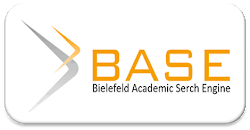Keberadaan Lesbian di Kota Syariat: Faktor dan Interaksi Subjek
DOI:
https://doi.org/10.22373/jsai.v2i2.1473Keywords:
Lesbians, Factor, InteractionAbstract
This study aims to describe the way lesbians interact with the environment where the majority of them are Muslims and the factors that influence a person to become a lesbian. The method used is a qualitative method with a case study approach. The informants of this study were four lesbians who lived in the city of Banda Aceh. The results of this study indicate that there are several things that underlie social interactions that shape lesbian behavior in an environment where the majority of Muslims are Muslims, that is family factors, fun, and trauma. The way lesbians adapt and run a partner relationship is the same as for heterosexual couples in general. However, for a more intimate relationship, this lesbian couple avoids their daily activities, then changes their appearance like men so that people don't suspect them.
References
Ahmad, K. B. (2015). Perempuan Aceh dalam Perspektif Antropologi. Gender Equality: Internasional Journal of Child and Gender Studies, 1(2).
Andry B, A. (2018). Lesbian, gay , bisexual dan transgender penyembuhan dan upayamembentuk kepribadianislami di era generasi millenial melalui psikoterapi islam. FIKROTUNA: Jurnal Pendidikan Dan Manajemen, 8, 934–948.
Arifianto, S. (2016). Implementasi Metode Penelitian: Studi Kasus dengan Pendekatan Kualitatif. Aswaja Pressindo.
Bahri, S. (2004). Pola Komunikasi Orang Tua dan Anak dalam Keluarga: Perspektif Pendidikan Islam. Rineka Cipta.
Damayanti, R. (2015). Pandangan Masyarakat Terhadap Lesbian Gay, Biseksual dan Transgender (LGBT): di Jakarta, Bogor, Depok dan Tangerang.
Din, M. (2009). Stimulasi Pembangunan Hukum Pidana Nasional dari Aceh untuk Indonesia. Unpad Press.
Karangora, M. L. B. (2016). Hubungan Antara Dukungan Sosial Dan Kualitas Hidup Pada Lesbian Di Surabaya. Jurnal Ilmiah Mahasiswa Universitas Surabaya, 5(1), 1–12.
Marthilda, D., Mabruri, M. I., & Hendriyani, R. (2014). FAKTOR-FAKTOR PEMILIHAN ORIENTASI SEKSUAL (Studi Kasus Pada Lesbian). Developmental and Clinical Psychology, 3(1).
Megananda, W. (2019). Menjadi Lesbian: Kajian Interaksionisme Simbolik Lesbian di Surabaya. Simulacra, 2(2). https://doi.org/10.21107/sml.v2i2.6148
Miles, M. B., & Huberman, M. A. (1994). Qualitative Data Analysis (Second Edi). SAGE Publications.
Noerdin, E. (2005). Politik Identitas Perempuan Aceh. Women Research Institute.
Randi, D. (2021). Pasangan gay di Aceh dihukum cambuk 77 kali oleh 3 algojo. CNN Indonesia. https://www.cnnindonesia.com/nasional/20210128142349-12-599530/pasangan-gay-di-aceh-dihukum-cambuk-77-kali-oleh-3-algojo
Susanti, A., & Widjanarko, M. (2015). Fenomena Cinta Lesbian. Jurnal Psikologi Undip, 14(2). https://doi.org/10.14710/jpu.14.2.160-173
Downloads
Published
How to Cite
Issue
Section
License
- Authors retain copyright and grant the journal right of first publication with the work simultaneously licensed under an Attribution-NonCommercial-ShareAlike 4.0 International (CC BY-NC-SA 4.0) that allows others to share the work with an acknowledgment of the work's authorship and initial publication in this journal.
- Authors are able to enter into separate, additional contractual arrangements for the non-exclusive distribution of the journal's published version of the work (e.g., post it to an institutional repository or publish it in a book), with an acknowledgment of its initial publication in this journal.
- Authors are permitted and encouraged to post their work online (e.g., in institutional repositories or on their website) prior to and during the submission process, as it can lead to productive exchanges, as well as earlier and greater citation of published work.














